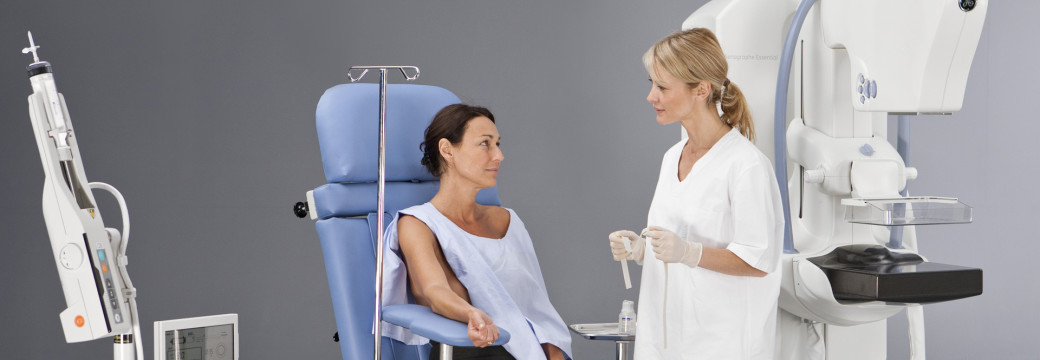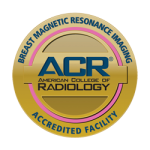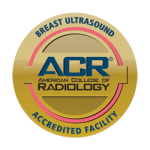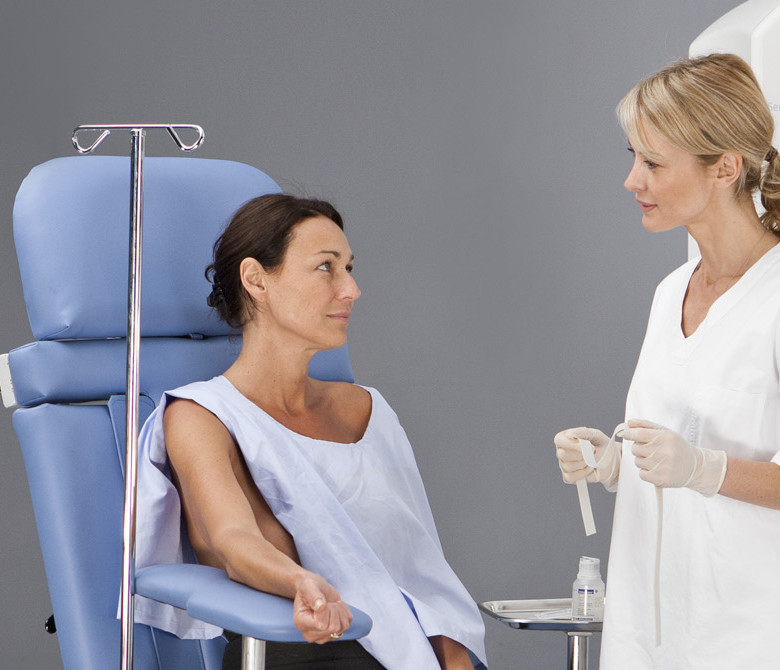Digital Mammography

Mammography is a specific type of breast imaging that uses low-dose x-rays to detect cancer early – before women experience symptoms – when it is most treatable.
Tell your doctor about any breast symptoms or problems, prior surgeries, hormone use, whether you have a family or personal history of breast cancer, and if there’s a possibility you are pregnant. It is recommended you obtain copies of your prior mammograms and make them available to your radiologist on the day of your exam if you are going to a new facility to have it done. Leave jewelry at home and wear loose, comfortable clothing. You will be asked to wear a gown. Avoid wearing deodorant, any type of powder or lotion under your arms or on your breasts as these may appear on the mammogram and interfere with correct diagnosis.





What is Mammography?
Mammography is specialized medical imaging that uses a low-dose x-ray system to view the inside of the breasts. A mammography exam, also called a mammogram, aids in the early detection and diagnosis of breast diseases in women.
Recent advances in mammography include digital mammography, computer-aided detection and breast tomosynthesis (3D mammography).
Digital mammography, also called full-field digital mammography (FFDM), is a mammography system in which the x-ray film is replaced by electronics that convert x-rays into mammographic pictures of the breast. These systems are similar to those found in digital cameras and their efficiency enables better pictures with a lower radiation dose. These images of the breast are then transferred to a computer for review by the radiologist. The patient’s experience during a digital mammogram is similar to having a conventional film mammogram.
Computer-aided detection (CAD) systems search digitized mammographic images for abnormal areas of density, mass, or calcification that may indicate be signs of cancer. The CAD system highlights these areas on the images, alerting the radiologist to carefully assess this area.
Breast tomosynthesis (3D) mammography and digital breast tomosynthesis (DBT), is an advanced form of breast imaging where multiple images of the breast from different angles are captured and reconstructed (“synthesized”) into a three-dimensional image set. In this way, 3D breast imaging is similar to computed tomography (CT) imaging in which a series of thin “slices” are assembled together to create a 3D reconstruction of the body.
Although the radiation dose for some breast tomosynthesis systems is slightly higher than the dosage used in standard mammography, it remains within the FDA-approved safe levels for radiation from mammograms. Some systems have doses very similar to conventional mammography.
Studies have shown that screening with breast tomosynthesis results in improved breast cancer detection rates.
Breast tomosynthesis may also result in:
- fewer unnecessary biopsies or additional tests.
- greater likelihood of detecting multiple breast tumors.
- clearer images of abnormalities within dense breast tissue.
- greater accuracy in identifying the size, shape and location of breast abnormalities.
- earlier detection of small breast cancers that may not be detected on a conventional mammogram.
What are some common uses of the procedure?
Mammograms are used as a screening tool to detect early breast cancer in women experiencing no symptoms. They can also be used to detect and diagnose breast disease in women that are experiencing symptoms such as a lump, pain, skin dimpling or nipple discharge.
Screening Mammography
Mammography plays a significant part in early detection of breast cancers because it can show changes in the breast up to two years before a patient or physician can feel them. Current guidelines from the U.S. Department of Health and Human Services (HHS), the American Medical Association (AMA) and the American College of Radiology (ACR) recommend screening mammography every year for women beginning at age 40. Research has shown that annual mammograms lead to early detection of breast cancers, when they are most curable and breast-conservation therapies are available.
The National Cancer Institute (NCI) adds that women who have had breast cancer, and those who are at increased risk due to a family history of breast or ovarian cancer, should seek expert medical advice about whether they should begin screening before age 40 and the need for other types of screening. If you are at high risk for breast cancer, you may need to obtain a breast MRI in addition to your annual mammogram.
Diagnostic Mammography
Diagnostic mammography is used to evaluate a patient with abnormal clinical findings such as a breast lump or nipple discharge that have been found by the woman or her doctor. Diagnostic mammography can also be done after an abnormal screening mammogram in order to evaluate the area of concern on the screening exam.
How should I prepare?
Before scheduling a mammogram, the American Cancer Society (ACS) and other specialty organizations recommend that you discuss any new findings or problems in your breasts with your doctor. It is also important to inform your doctor of any prior surgeries, hormone use, and family or personal history of breast cancer.
Do not schedule your mammogram for the week before your menstrual period if your breasts are usually tender during this time. The best time for a mammogram is one week following your period. Always inform your doctor or x-ray technologist if there is any possibility that you are pregnant.
The ACS also recommends you:
- Do not wear deodorant, talcum powder or lotion under your arms or on your breasts on the day of the exam. These can appear on the mammogram as calcium spots.
- Describe any breast symptoms or problems to the technologist performing the exam.
- Obtain your prior mammograms and make them available to the radiologist if they were done at a different location. This is needed for comparison with your current exam and can often be obtained on a CD.
- Ask when your results will be available; do not assume the results are normal if you do not hear from your doctor or the mammography facility.
How does the procedure work?
X-rays are a form of radiation like light or radio waves. X-rays pass through most objects, including the body. Once it is carefully aimed at the part of the body being examined, an x-ray machine produces a small burst of radiation that passes through the body, recording an image on photographic film or a special detector.
Different parts of the body absorb the x-rays in varying degrees. Dense bone absorbs much of the radiation while soft tissue, such as muscle, fat and organs, allow more of the x-rays to pass through them. As a result, bones appear white on the x-ray, soft tissue shows up in shades of gray and air appears black.
Images are digital files that are stored electronically. These stored images are easily accessible and are frequently compared to current x-ray images for diagnosis and disease management.
In conventional film and digital mammography, a stationery x-ray tube captures an image from the side and above the compressed breast. In breast tomosynthesis, the x-ray tube moves in an arc over the breast, capturing multiple images from different angles.
How is the procedure performed?
Mammography is performed on an outpatient basis.
During mammography, a specially qualified radiologic technologist will position your breast in the mammography unit. Your breast will be placed on a special platform and compressed with a clear plastic paddle. The technologist will gradually compress your breast.
Breast compression is necessary in order to:
- increase sharpness of picture.
- Even out the breast thickness so that all of the tissue can be visualized.
- Spread out the tissue so that small abnormalities are less likely to be hidden by overlying breast tissue.
- Hold the breast still in order to minimize blurring of the image caused by motion.
- Allow the use of a lower x-ray dose since a thinner amount of breast tissue is being imaged.
You will be asked to change positions between images. The routine views are a top-to-bottom view and an angled side view. The process will be repeated for the other breast. Compression is still necessary for tomosynthesis imaging in order to minimize motion, which degrades the images. During screening breast tomosynthesis, two-dimensional images are also obtained or created from the synthesized 3D images.
You must hold very still and may be asked to keep from breathing for a few seconds while the x-ray picture is taken to reduce the possibility of a blurred image. The technologist will walk behind a small wall to activate the x-ray machine.
When the examination is complete, you may be asked to wait until the radiologist determines that all the necessary images have been obtained.
The examination process should take about 30 minutes.
What will I experience during and after the procedure?
You will feel pressure on your breast as it is squeezed by the compression paddle. Some women with sensitive breasts may experience discomfort. If this is the case, schedule the procedure when your breasts are least tender. Be sure to inform the technologist if pain occurs as compression is increased. If discomfort is significant, less compression will be used. Always remember compression allows better quality mammograms.
Who interprets the results and how do I get them?
A radiologist, a physician specifically trained to supervise and interpret radiology examinations, will analyze the images and send a signed report to your primary care or referring physician, who will discuss the results with you.
You will also be notified of the results by the mammography facility.
Follow-up examinations may be necessary, and your doctor will explain the exact reason why another exam is requested. Sometimes a follow-up exam is done because a suspicious or questionable finding needs clarification with additional views or a special imaging technique. A follow-up examination may also be necessary so that a known abnormality can be monitored over time. Follow-up examinations are sometimes the best way to see if treatment is working or if an abnormality is stable or changed over time.
What are the benefits vs. risks?
Benefits
- Early detection when imaging of the breast improves a physician’s ability to detect small tumors. When cancers are small, the woman has more treatment options.
- The use of screening mammography increases the detection of small abnormal tissue growths confined to the milk ducts in the breast, called ductal carcinoma in situ (DCIS). These early tumors cannot harm patients if they are removed at this stage and mammography is an excellent way to detect these tumors.
- It is also useful for detecting all types of breast cancer, including invasive ductal and invasive lobular cancer.
- Radiation does not remain in a patient’s body after an x-ray examination.
- X-rays generally have no side effects in the typical diagnostic range for this exam.
Risks
- There is always a slight chance of cancer from excessive exposure to radiation. However, the benefit of an early and accurate diagnosis far outweighs the risk.
- The effective radiation dose for this procedure varies.
- False Positive Mammograms. Five percent to 15 percent of screening mammograms require more testing such as additional mammograms or ultrasound. Most of these tests turn out to be normal. If there is an abnormal finding, a follow-up or biopsy may have to be performed. Most of the biopsies confirm that no cancer was present. It is estimated that a woman who has yearly mammograms between ages 40 and 49 has about a 30 percent chance of having a false-positive mammogram at some point in that decade and about a 7 percent to 8 percent chance of having a breast biopsy within the 10-year period.
- Women should always inform their physician or x-ray technologist if there is any possibility that they are pregnant.
What are the limitations of Mammography?
Mammographic images themselves are not usually enough to determine the existence of a benign or malignant disease with certainty. If a finding or spot seems suspicious, your radiologist may recommend further diagnostic studies.
Interpretations of mammograms can be difficult because a normal breast looks different for each woman. Also, the appearance of an image may be compromised if there is powder or salve on the breasts or if you have had previous breast surgery. Because some breast cancers are hard to visualize, a radiologist may want to compare the image to views from previous examinations. It is very important to realize that not all breast cancers can be seen on mammography.
Increased breast density has attracted attention from a number of state legislatures for multiple reasons,
including:
- Increased breast density makes it difficult to see a cancer on mammography.
- Increased breast density may increase the risk of getting breast cancer.
The radiologist reading your mammogram determines your breast density and reports it to your doctor.
Breast implants can also affect accurate mammogram readings because both silicone and saline implants are not transparent on x-rays and can block a clear view of the tissues behind them, especially if the implant has been placed in front of, rather than beneath, the chest muscles. Experienced technologists and radiologists know how to carefully compress the breasts to improve the view without rupturing the implant. When scheduling your appointment, make sure to disclose that you do have breast implants.
While mammography is the best screening tool for breast cancer available today, mammograms do not detect all breast cancers. This is called a false negative result. On the other hand, when a mammogram looks abnormal and no cancer is present, this is called a false-positive result.
Research is being done on a variety of breast imaging techniques that can contribute to the early detection of breast cancer and improve the accuracy in distinguishing non-cancerous breast conditions from breast cancers.
Please visit www.Radiologyinfo.org for additional information on this procedure.

